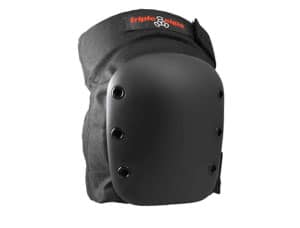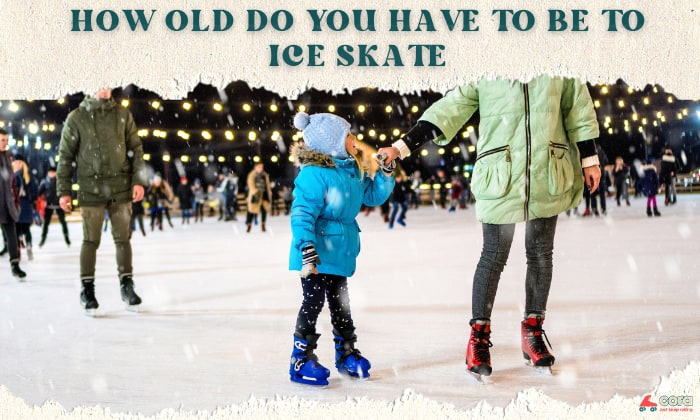Skating is a popular activity enjoyed by millions of people around the world. However, it is also a sport that comes with risks. Knee injuries, in particular, are common among skaters. Luckily, there is something skaters can put on to minimize the chances of getting hurt: knee pads.
Knee pads not only protect the knees but also help reduce the severity of any injuries that may occur during skating. In this blog post, we will guide you on how to wear knee pads for skating, from choosing the right type to fitting them correctly and maintaining them for maximum protection.
Page Contents
How to Put on Knee Pads for Skating
Step 1: Choosing the Right Knee Pads for Skating
01 Consider Your Skating Style & VenueDifferent skating styles require varied levels of protection. If you are a beginner or casual skater, foam knee pads may be sufficient. For aggressive skating, hard-shell roller skating knee pads are recommended.
If you are skating indoors, knee pads with thin to medium thickness are adequate. For outdoor trail skating and high-impact skate park sessions, medium to thick padding is ideal.
02 Check The Sizing ChartKnee pads are available in different sizes, so it is important to consult a sizing chart before making a purchase. Knee pads too small or too big can be uncomfortable and will not be able to provide adequate protection.
Note: If you are getting your little ones knee pads, get a sizing chart for kids!
03 Look For The Right FitKnee pads should fit snugly and not slip or slide down from your knee. However, it shouldn’t be so tight that it restricts your movements.
The takeaway here is: it is always good to look for knee pads with adjustable straps or a sleeve design to ensure a secure yet comfortable fit.
Step 2: Fitting & Adjusting Knee Pads For Skating
The method for putting on knee pads will vary, depending on what type you have. However, with all three types, make sure the padding covers your entire kneecap. Try bending your knees – the pads shouldn’t restrict your movement.
01 Butterfly enclosure(Example: the Triple 9 Street Knee Pads)Undo the straps and place the pad right on your knees. Loop the tightening straps around your knees so that the protective gear won’t slide down with quick movements. Secure the pad with Velcro straps.
02 Slide-on pads with Velcro and tightening straps(Example: The 186 Killer Pads)Pull the pad on and over your knee. Then, tug the straps on the protective gear’s top and bottom until it feels secure on your knees. Keep the straps in place by sticking it ends to the Velcro tape.
03 Slide-on pads without tightening straps (Sleeve)(Example: The Triple 8 Covert Knee Pads)Slip your foot through the knee protection. Gently and slowly, pull the pad by its top until it covers your knee. Make sure that it doesn’t cover your thighbone. When you squat down, the pad should still stay on top of your knees.
There are no tightening or Velcro straps in this type, so you only need to adjust the pad until you’re satisfied with how it fits around your legs.
04 Sleeve with Velcro straps(Example: The JBM Knee Pads)Undo the Velcro straps and slip your foot through the sleeve. Keep tugging the pad so it covers your knees. With that done, pull the Velcro straps and secure them.
How Do Knee Pads Work?
Knee pads are protective gear that covers your knees and provide cushioning against impact. They work by absorbing a significant portion of the impact from a fall or blow, which could otherwise cause serious injuries, such as bruises, cuts, and even broken bones.
Essentially, skaters use knee pads to help distribute any hard impacts away from the kneecap while also providing some essential padding for their knees.
Besides preventing injuries, knee pads provide support for the muscles surrounding the knee, keeping them stable during sudden movements or sharp turns.
In addition, they give skaters peace of mind and confidence to try new tricks or maneuvers, making skating more enjoyable.
Types of Knee Pads
Knee pads can be categorized by their type of closure system.
- Butterfly Closure: These use Velcro straps. They are easier and faster to put on or take off because you do not need to get your skates out of the way.
- Slide-On/Sleeves: As implied in the name, you need to slide these on. You wear them like socks, only they go up to your knees and do not round off at the bottom. They are not as convenient because you need to wear them before putting on your skates, and you must take off your skates before you can remove them.
Slide-on and sleeve knee pads can still have Velcro and tightening straps to ensure a more secure fit.
Other than closure systems, you can classify knee pads according to how they are designed:
- Shell Cap Knee Pads: These have a hard plastic outer shell that is designed to absorb impacts and distribute pressure evenly across your knee.
- Hex Knee Pads: These use a honeycomb-shaped pattern of foam padding to offer excellent protection against impacts while being lightweight and breathable.
- Padding Cap Knee Pads: These are made from multiple layers of foam padding to provide maximum cushioning and support for your joints.
Also, you should avoid DIY knee pads for skating, as they may not provide adequate protection and could potentially lead to injury.
Other Protective Gear for Skating
In addition to knee pads, there are other protective gear specifically designed for skating.
- Elbow pads: As you can probably guess, these protect the elbows. Skaters put on elbow pads/wear elbow pads to minimize the impact they endure when falling.
- Wrist guards: Skaters wear wrist guards to safeguard the wrists and hands from fractures or sprains.
- Mouthguards: These skating safety gear reduce the risk of mouth and dental injuries if a skater is involved in crashes.
- Helmet: This is a skating protective gear that protects the head and can save a skater’s lives in serious accidents.
- Hip pads or padded shorts: These help cushion impact during falls, making them ideal for skaters who like doing stunts and tricks.
Make it a habit to always put on wrist guards, knee and elbow pads, mouthguards, a helmet, and padded shorts. All of these safety equipment contribute to a safer and more enjoyable skating experience!
Conclusion
Now, you know how to wear knee pads for skating! Wearing knee pads is an important safety measure for skaters of all levels. By choosing the right type of knee pads, fitting them correctly, and maintaining them regularly, you can reduce the risk of knee injuries while enjoying your favorite activity.
Remember to always wear your knee pads, keep them clean and dry, and replace them when necessary. With these tips in mind, you can skate safely and confidently for years to come.

Harrison is a skating enthusiast who picked up the sport during her student exchange years in Canada. She has been a skating coach for children and teens for 3 years and now holds classes as a freelancer. Harrison entwines her experience leading skating classes in the content published on Cora to help readers fall in love with skating, just like she did.


















